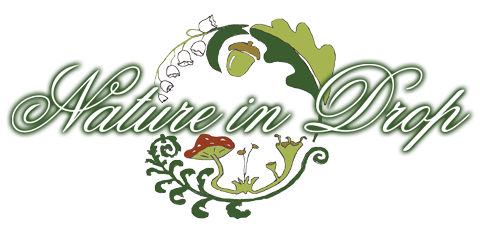step by step..
Nowadays only a few people believe in miracles, but miracles do happen. Electroforming is a real miracle for many of us. Every time I watch the living leaves gain immortality in a copper robe, I experience moments of true enthusiasm. I have been helping this magical transformation for several years and now I want to share with you what happens behind the scenes of the magical process. The following text is more of an insight into the secrets of electroforming and what it can do. But if you are interested in this technique, you can buy a detailed production MANUAL or attend one of the COURSES.
Electroforming was discovered by the German-Russian scientist Moritz Hermann Jacobi as early as 1836. The Czech name "galvanoplastika" comes from the Russian language and is related to the original applications of electroforming in the field of fine arts. However, it has nothing to do with plastics, which the Czech name seems to indicate.
Simply said, electroforming is the formation of a metal coating using electrolysis. With the help of electroforming, basically anything can be covered with metal.
I plat various plants, their flowers, leaves, fruits…
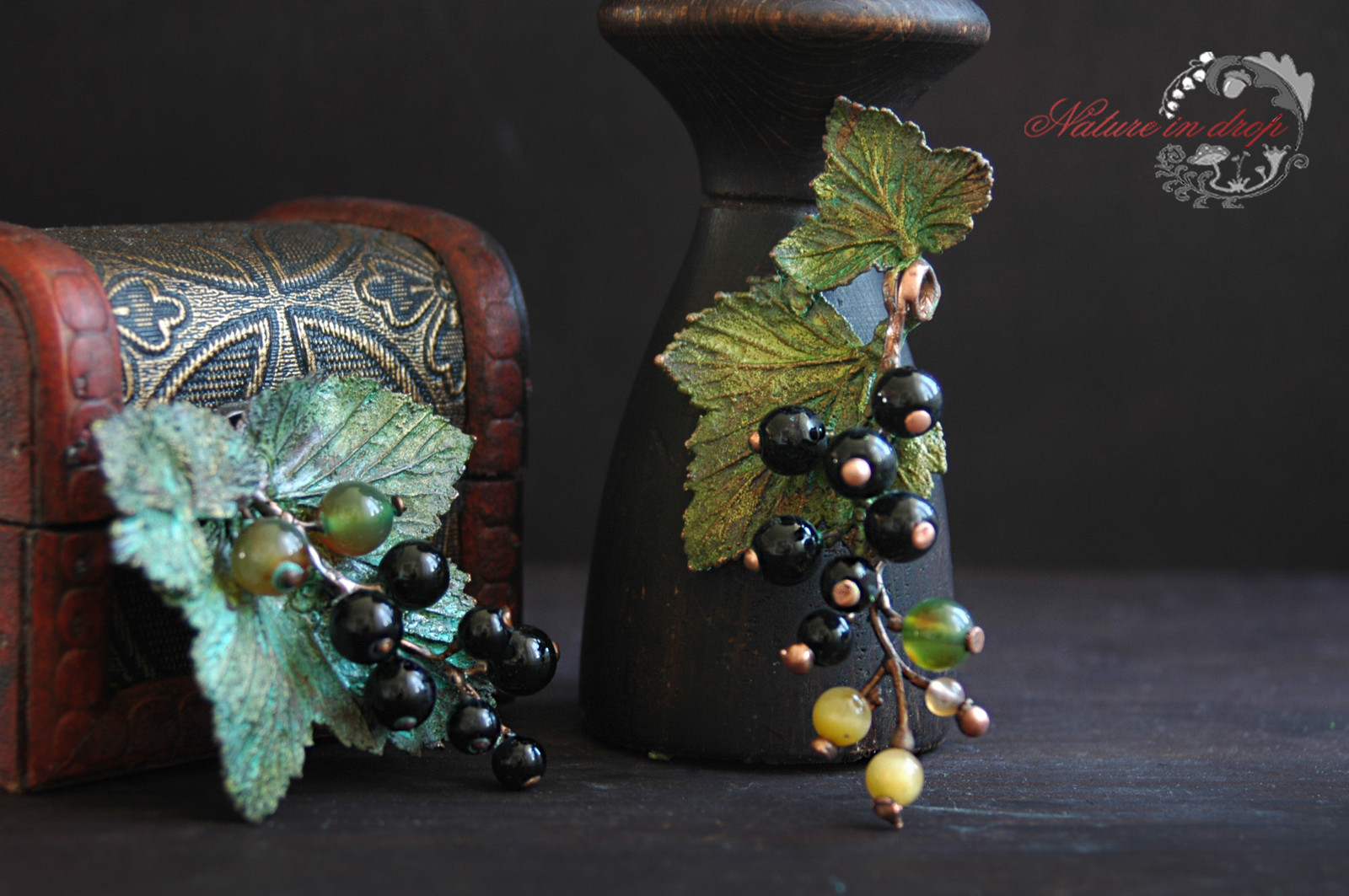
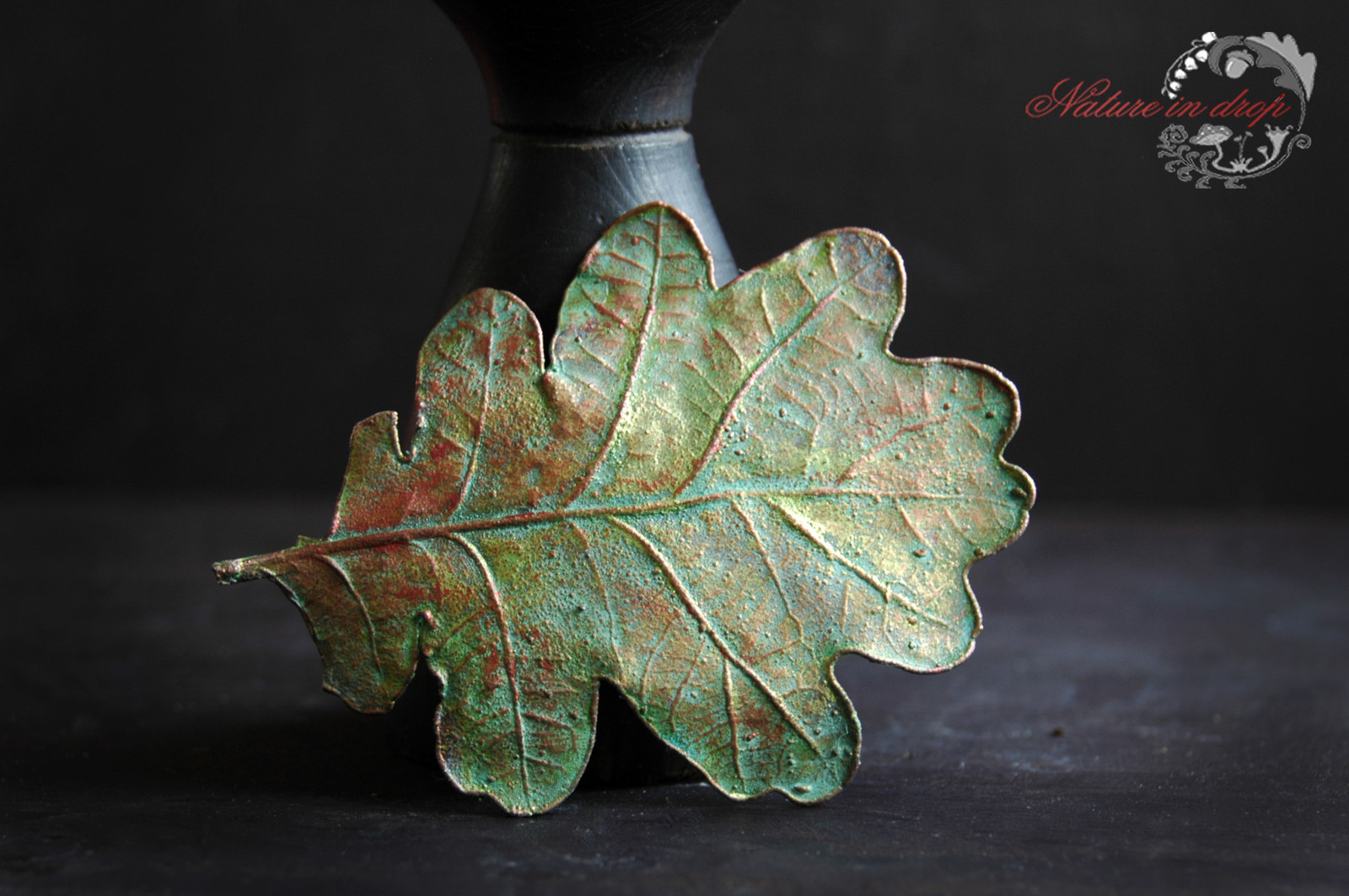
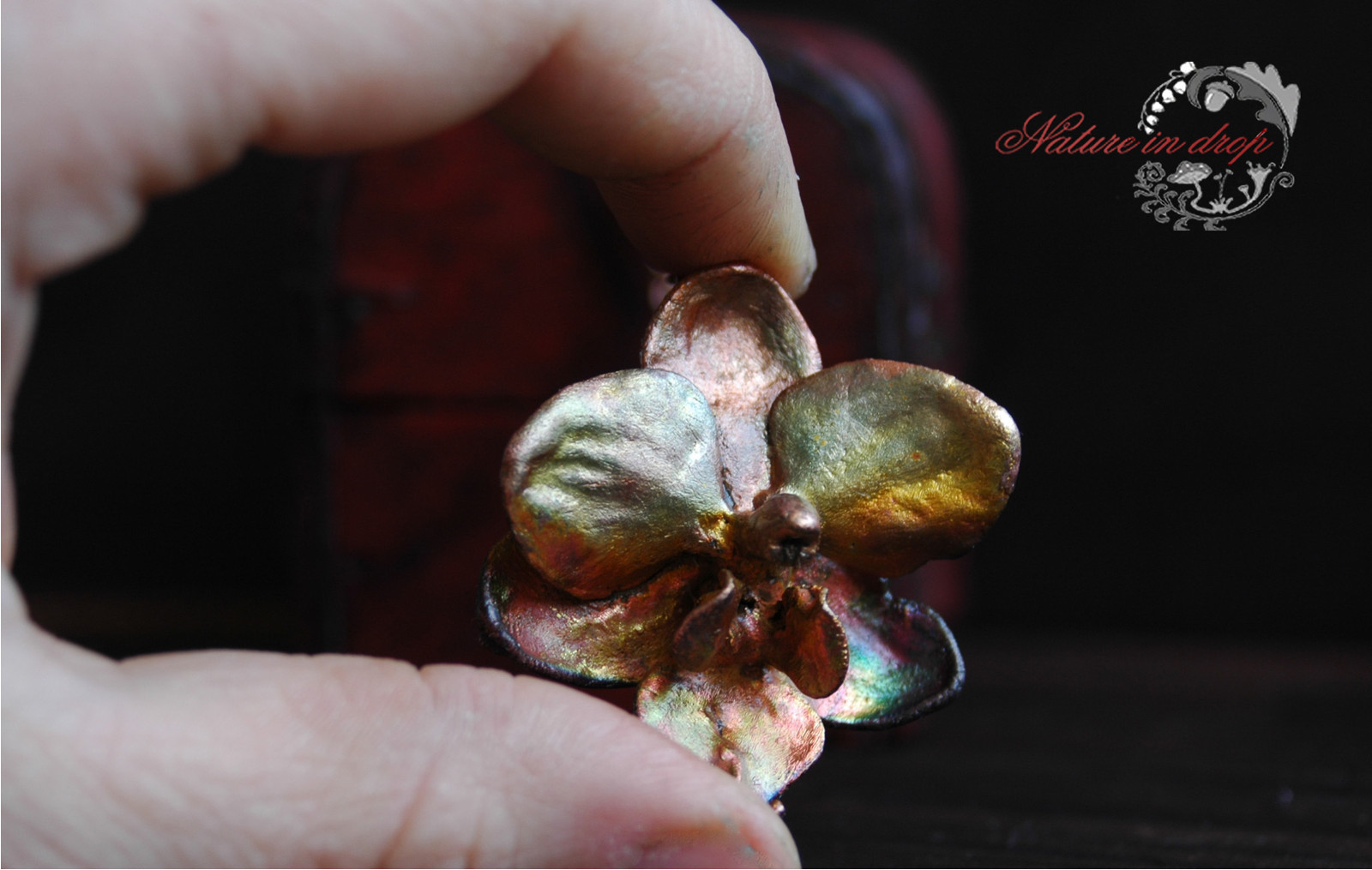
People sometimes have interesting ideas about how plants are plated. Most often, they think that I pour hot liquid metal on the leaves and flowers. According to others, I spray copper powder on the plant surface. Yes, we spray something, it's not copper, but later it turns into copper.
OK lets go! Let's see how the mysterious plating process really looks like.
The first stage is the darkest of the whole process. By applying graphite, everything becomes black and gloomy, but we achieve electrical conductivity. Graphite - this is what triggers the alchemical process. It creates a layer, thanks to which the surfaces gains the ability to bind copper. It is also possible to use bronze powder or other conductive materials, but I chose the graphite black magic.


The electrolyte is the second important participant in the plating process, from which copper is born. Properly made electrolyte is an ideal environment for the movement of copper ions. The copper is released into the solution from the immersed copper plates and then travels to the object selected for plating. Electrolyte production is similar to cooking a potion; the ingredients are added to it gradually according to a secret recipe.


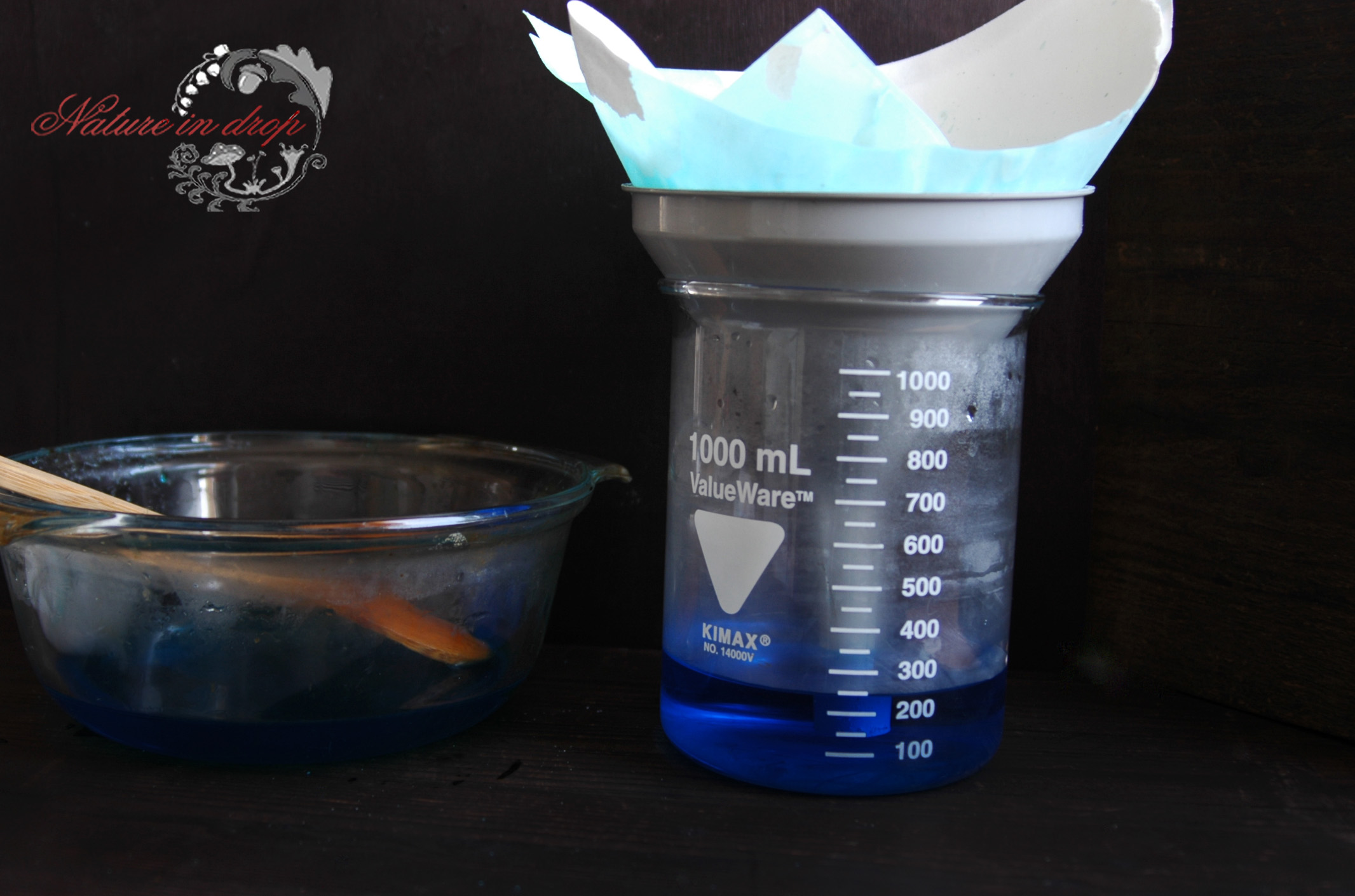
The basis of my potion is dead (distilled) water, a handful of blue vitriol and a drop of acid. These components give the fluid sharpness and toxicity, we must be careful when using and storing it.
On the quality and composition of the electrolyte it depends how matt or shiny the copper will be and how plastic or brittle the jewelry will arise. If we make a mistake, the leaf can turn into a rag.
On the quality and composition of the electrolyte it depends how matt or shiny the copper will be and how plastic or brittle the jewelry will arise. If we make a mistake, the leaf can turn into a rag.
However, nothing would happen without the presence of electricity. Just this causes copper to be deposited on the graphite-coated plated object.
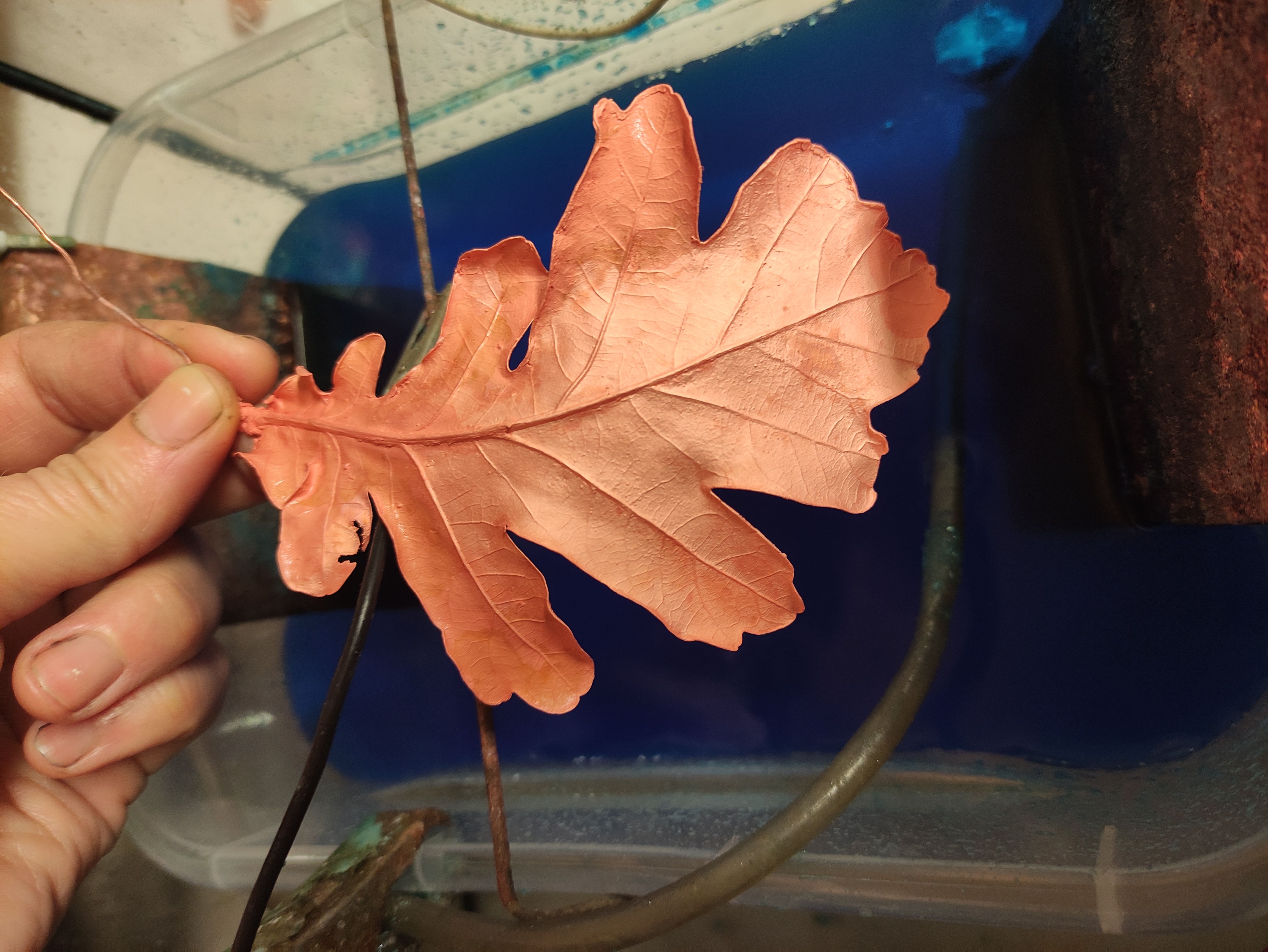
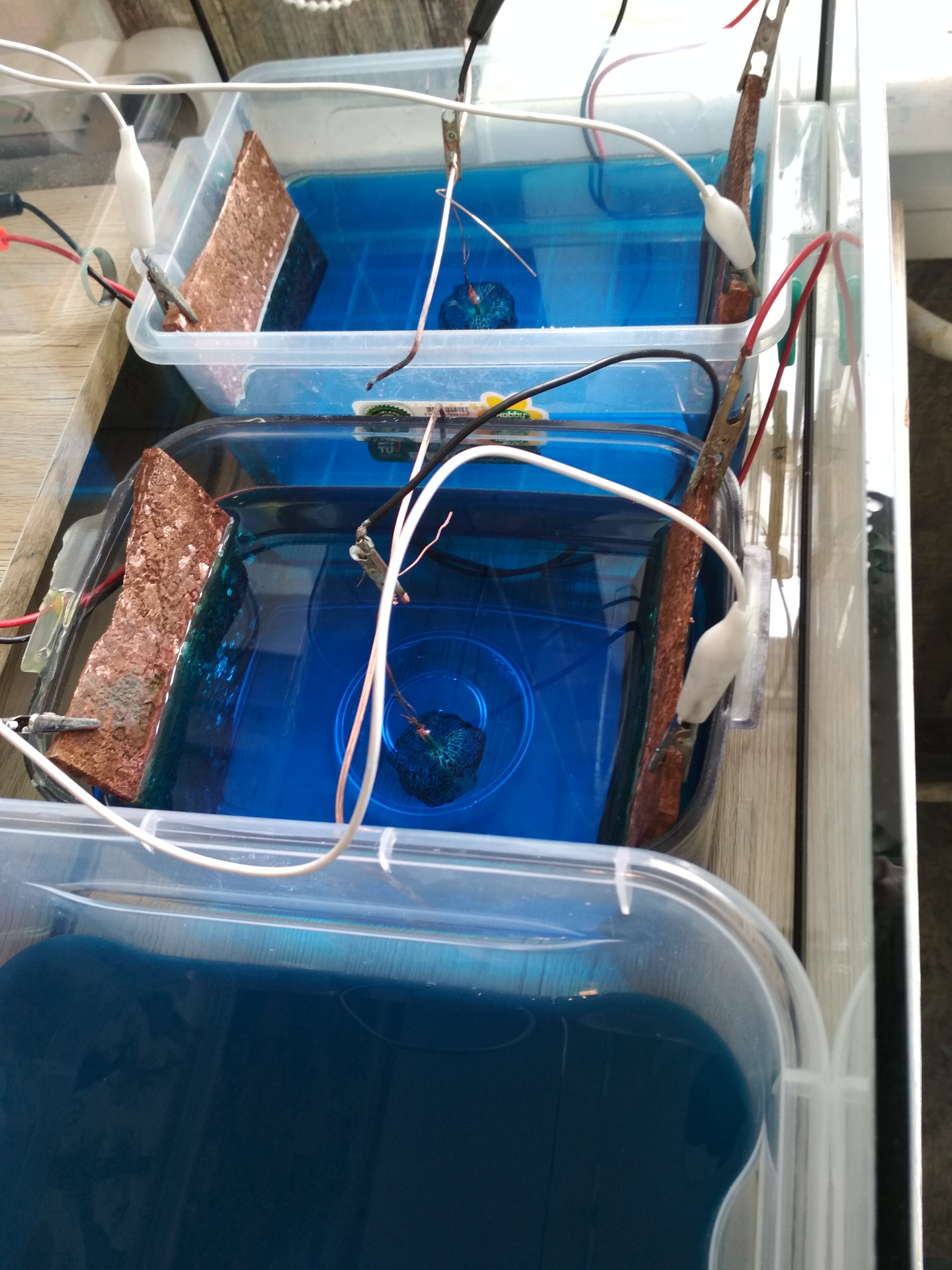
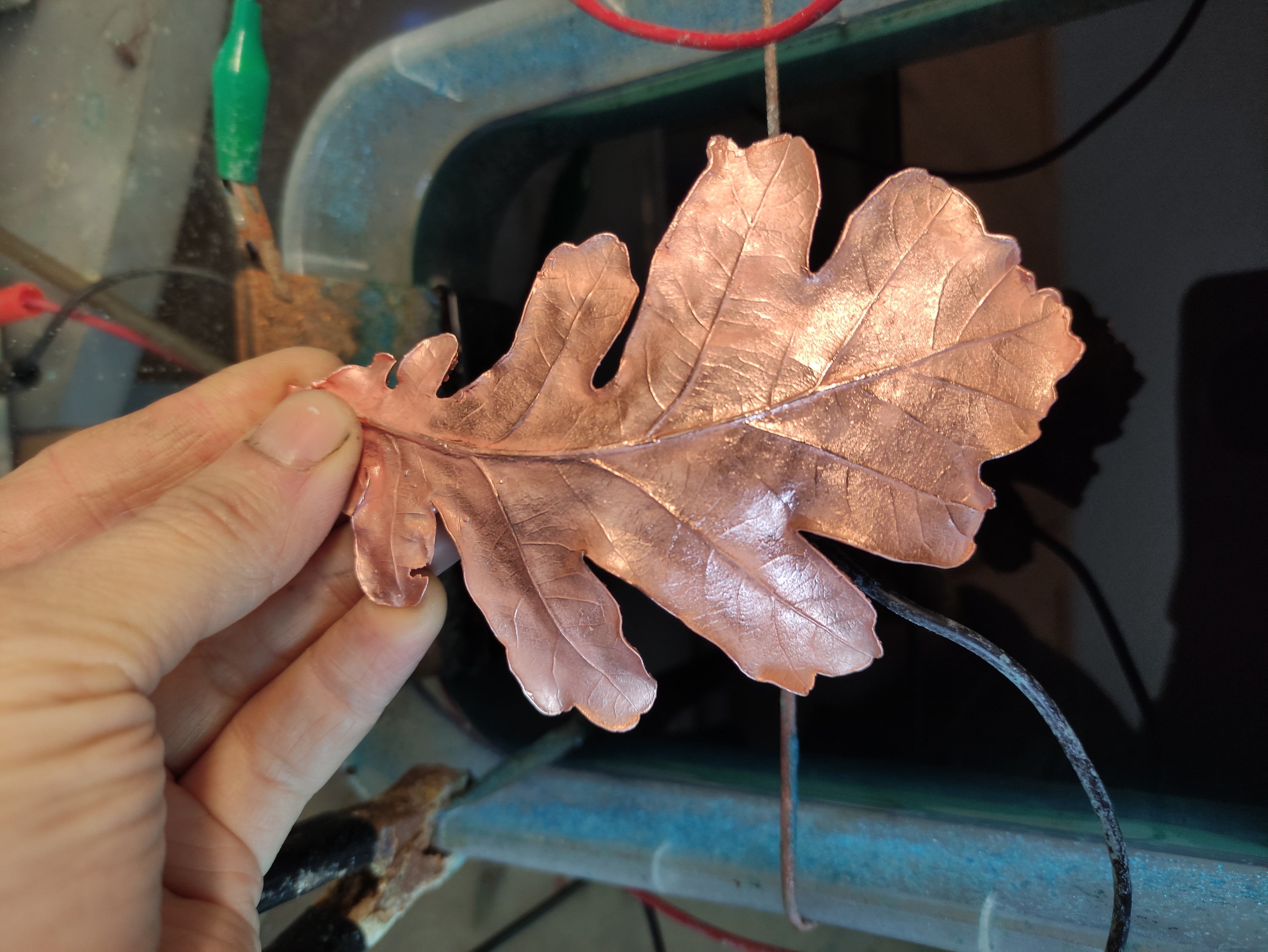
The speed and quality of coppering depends on the strength of the electric current. A strong current can spoil and deform the jewelry or create on it unnatural structures of the shape of bead protrusions and stripes (sometimes very decorative). When exposed to a weak current, the plating is uneven and the object is then too brittle. The electrical circuit is the third part of the galvanizing process.


Full copper coverage takes several hours, but sometimes it takes even a week to get the right plating. Occasionally the plating fails, and then the work is accompanied by a quiet curse and a loud utterance of magic spells. But we will not mention failures anymore, they are a matter of course in any creative work. With a little patience, we will eventually create beauty saturated with the power of copper.
The copper coat copies even the finest surface structures, it looks fantastic and realistic at the same time.
After the plating process, however, the work on the jewelry is far from over. At this stage, we will take the help of a magic wand - a grinder with all sorts of accessories, which will bring the jewelry to a perfect look. We grind and polish matt copper to a mirror finish.
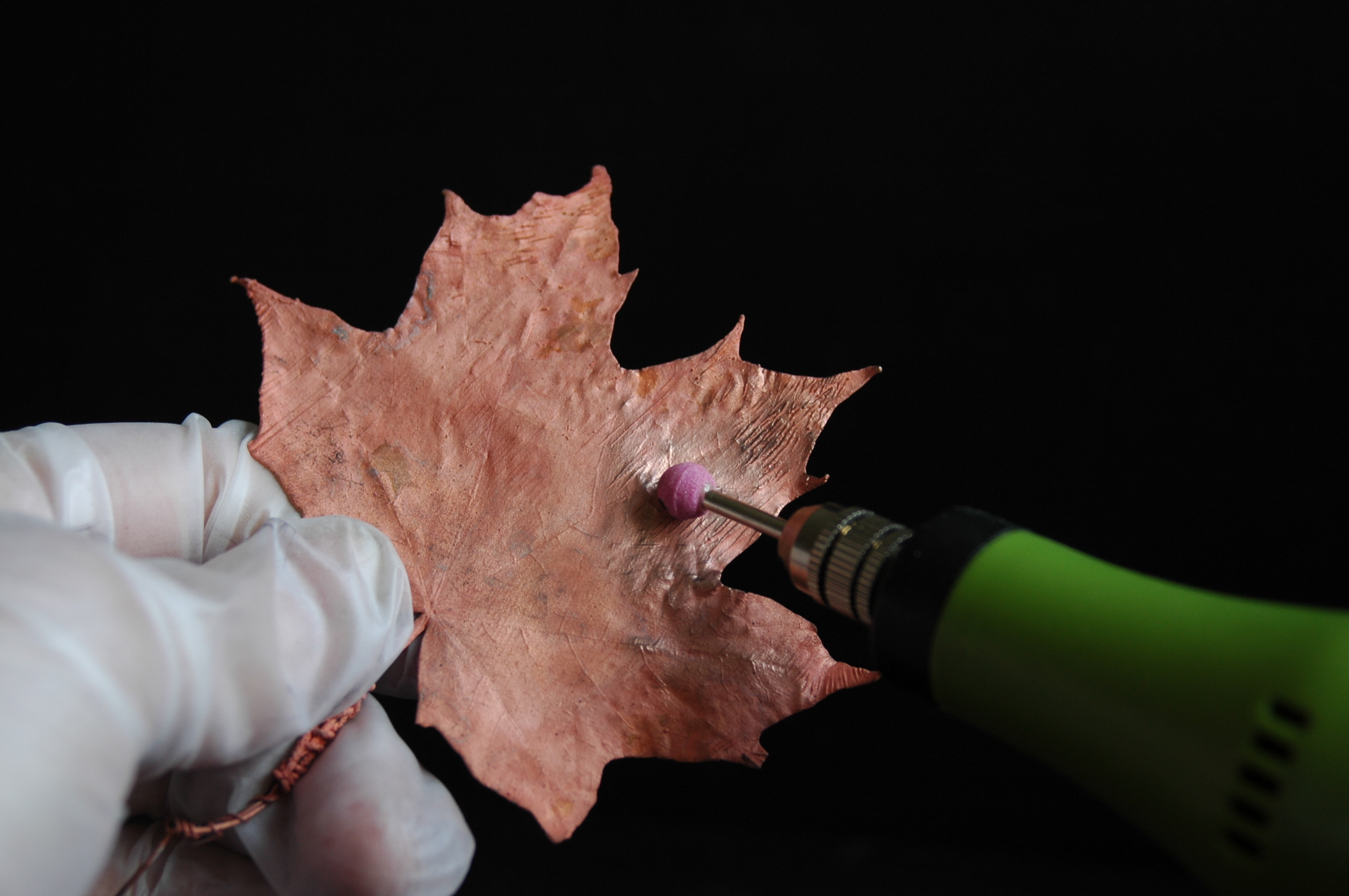
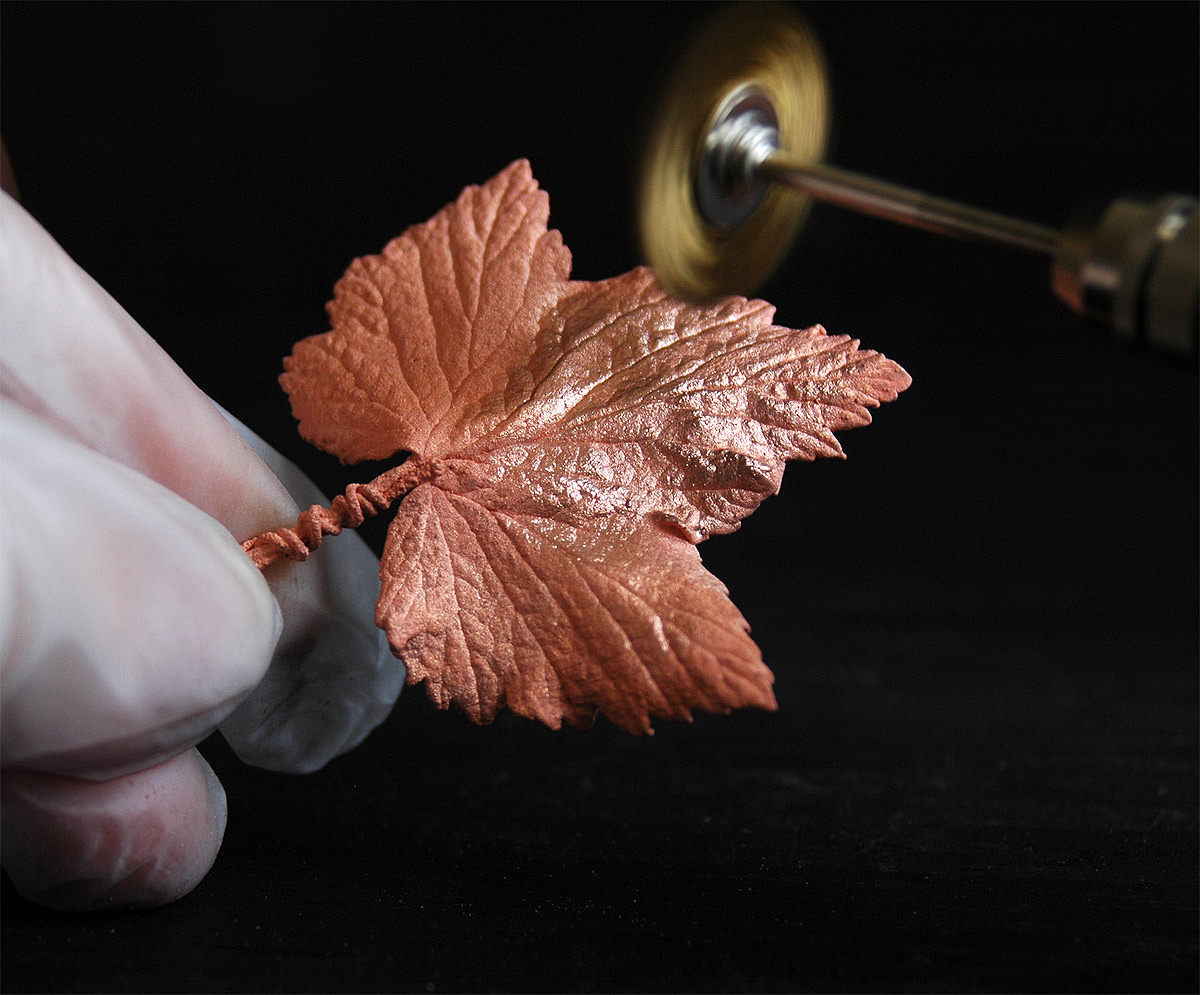

Then the plays with patination, waxing and glazing begin. I mix colors, experiment and overlap layers. And that's the real magic! The result is almost always unpredictable. The chemical reactions going on under my hands are difficult to control and give space for endless creation.
We can wait for years and get a natural patina - verdigris. But you can conjure a similar patina yourself or even simply buy it.



With the help of magical fire we can create a very beautiful, but only temporary pyropatina.
My favorite rainbow patina, very bright and colorful, which we create in a special way at high electrical voltage. I keep the detailed instructions secret and will only reveal them to my disciples. :)

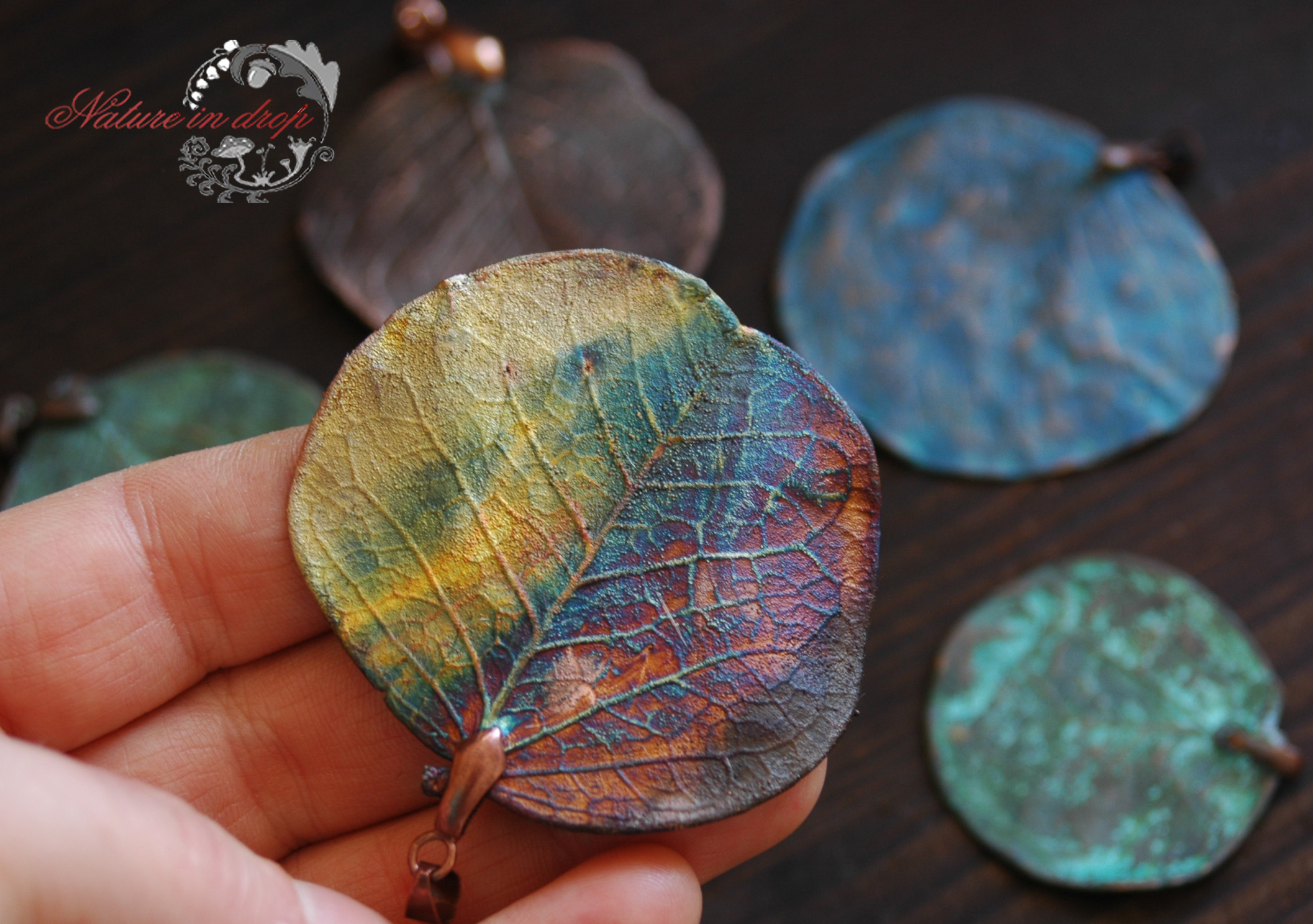

I can connect copper creations with glass, tin or stones using soft or hard soldering techniques. In short, I unleash my imagination and continue to create ...
